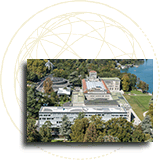UNDERSTANDING THE WTO:
CROSS-CUTTING AND NEW ISSUES
Investment, competition, procurement, simpler procedures
Ministers from WTO member-countries decided at the 1996 Singapore Ministerial Conference to set up three new working groups: on trade and investment, on competition policy, and on transparency in government procurement. They also instructed the WTO Goods Council to look at possible ways of simplifying trade procedures, an issue sometimes known as “trade facilitation”. Because the Singapore conference kicked off work in these four subjects, they are sometimes called the “Singapore issues”.
These four subjects were originally included on the Doha Development Agenda. The carefully-negotiated mandate was for negotiations to start after the 2003 Cancún Ministerial Conference, “on the basis of a decision to be taken, by explicit consensus, at that session on modalities of negotiations”. There was no consensus, and the members agreed on 1 August 2004 to proceed with negotiations in only one subject, trade facilitation. The other three were dropped from the Doha agenda.
> See also Doha Agenda negotiations
back to top
Investment and competition: what role for the WTO?
Work in the WTO on investment and competition policy issues originally took the form of specific responses to specific trade policy issues, rather than a look at the broad picture.
Decisions reached at the 1996 Ministerial Conference in Singapore changed the perspective. The ministers decided to set up two working groups to look more generally at how trade relates to investment and competition policies.
The working groups’ tasks were analytical and exploratory. They would not negotiate new rules or commitments without a clear consensus decision.
The ministers also recognized the work underway in the UN Conference on Trade and Development (UNCTAD) and other international organizations. The working groups were to cooperate with these organizations so as to make best use of available resources and to ensure that development issues are fully taken into account.
An indication of how closely trade is linked with investment is the fact that about one third of the $6.1 trillion total for world trade in goods and services in 1995 was trade within companies — for example between subsidiaries in different countries or between a subsidiary and its headquarters.
The close relationships between trade and investment and competition policy have long been recognized. One of the intentions, when GATT was drafted in the late 1940s, was for rules on investment and competition policy to exist alongside those for trade in goods. (The other two agreements were not completed because the attempt to create an International Trade Organization failed.)
Over the years, GATT and the WTO have increasingly dealt with specific aspects of the relationships. For example, one type of trade covered by the General Agreement on Trade in Services (GATS) is the supply of services by a foreign company setting up operations in a host country — i.e. through foreign investment. The Trade-Related Investment Measures Agreement says investors’ right to use imported goods as inputs should not depend on their export performance.
The same goes for competition policy. GATT and GATS contain rules on monopolies and exclusive service suppliers. The principles have been elaborated considerably in the rules and commitments on telecommunications. The agreements on intellectual property and services both recognize governments’ rights to act against anti-competitive practices, and their rights to work together to limit these practices.
> more
on investment
> more
on competition policy
back to top
Transparency in government purchases: towards multilateral rules
The WTO already has an Agreement on Government Procurement. It is plurilateral — only some WTO members have signed it so far. The agreement covers such issues as transparency and non-discrimination.
The decision by WTO ministers at the 1996 Singapore conference did two things. It set up a working group that was multilateral — it included all WTO members. And it focused the group’s work on transparency in government procurement practices. The group did not look at preferential treatment for local suppliers, so long as the preferences were not hidden.
The first phase of the group’s work was to study transparency in government procurement practices, taking into account national policies. The second phase was to develop elements for inclusion in an agreement.
> more on government procurement
back to top
Trade facilitation: a new high profile
Once formal trade barriers come down, other issues become more important. For example, companies need to be able to acquire information on other countries’ importing and exporting regulations and how customs procedures are handled. Cutting red-tape at the point where goods enter a country and providing easier access to this kind of information are two ways of “facilitating” trade.
The 1996 Singapore ministerial conference instructed the WTO Goods Council to start exploratory and analytical work “on the simplification of trade procedures in order to assess the scope for WTO rules in this area”. Negotiations began after the General Council decision of 1 August 2004.
